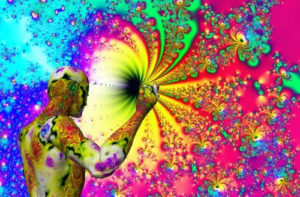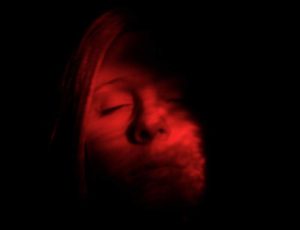Do Spiritual Experiences Reveal Ultimate Truth or Merely Brain Activity?
By John M. de Castro, Ph.D.
Spiritual experiences, be they called awakenings, mystical experiences, or enlightenments, involve a shift in how the individual perceives reality. This could be viewed as a spiritual revelation. But it could also be viewed as a change in the neural systems integrating and interpreting experiences. So, are spiritual awakenings revelations of a reality beyond physical reality or are they simply hallucinatory experience evoked by changes in the nervous system?
One way of investigating this question is to study the brain-spirituality connection. Research along these lines has revealed that there is a clear association between spirituality and the brain. Modern neuroscience has developed methods, such as neuroimaging, to investigate the relationship. Applying these techniques it has been demonstrated that spirituality is associated with changes in the size, activity, and connectivity of the frontal and parietal lobes of the brain (see http://contemplative-studies.org/wp/index.php/2015/07/19/spirituality-mindfulness-and-the-brain/). So spirituality and changes in neural systems co-occur. But, this does not demonstrate a causal connection, whether spirituality alters the brain or brain alteration causes spirituality, or some third factor is responsible for both.
A better way to demonstrate if brain activity cause spiritual experiences is to investigate what happens to spirituality when the brain changes. One place to look at this is with accidental brain injuries incurred by humans that afford an opportunity to glimpses associations between brain change and spirituality. In general people who have incurred damage to the right inferior parietal area show an increase in spirituality. So, brain alteration affects spirituality. But, increased spiritual beliefs and spiritual seeking is not the same thing as spiritual experiences. So, we cannot conclude that these changes in the brain are responsible for awakening experiences.
Another manipulation of the brain occurs with drugs. Indeed, various hallucinogenic drugs such as mescaline, LSD, psilocybin, etc. have been shown to produce experiences that are extremely similar to spiritual experiences. These drugs have been shown to alter the activity in specific neurochemical systems in the brain and when that happens, experiences that are very similar to spiritual awakenings are evoked. Many people who have used these drugs are altered spiritually but vast numbers of people find hallucinatory drugs as fun recreation but are not affected spiritually.
Spiritual seekers who have used psychedelic substances report that they experience something like but not the same as spiritual awakening experiences. The following quote from Alan Watts is illustrative.
“Psychedelic experience is only a glimpse of genuine mystical insight, but a glimpse which can be matured and deepened by the various ways of meditation in which drugs are no longer necessary or useful. If you get the message, hang up the phone. For psychedelic drugs are simply instruments, like microscopes, telescopes, and telephones. The biologist does not sit with eye permanently glued to the microscope, he goes away and works on what he has seen…”
Also a quote from Ralph Metzner
“While psychedelic use is all about altered states, Buddhism is all about altered traits, and one does not necessarily lead to the other.”
Hence, it appears that although there are great similarities between manipulation of brain chemistry with drugs and the experiences occurring with spiritual awakenings, they are in fact quite different.
So, what should we conclude regarding the clear relationship between the brain and spiritual experiences? It has been established that spirituality changes the brain and that changes in the brain are associated with spiritual experiences. Does this indicate that spirituality is nothing but a brain function? This would suggest that spirituality and spiritual experiences are nothing but physical events and don’t represent experience of true transcendence or an indication of a god. If this were true then it would suggest that there is nothing beyond the physical, that spiritual awakenings are nothing other than evoked changes in the nervous system.
It should be noted that reported spiritual experiences most frequently involve changes in sensory experiences. We know that sensory experiences are produced by the nervous system. So, it would be expected that if a spiritual experience occurs then there would be changes in the nervous system. As a result it is not surprising that nervous system changes would accompany spiritual experiences.
Neural changes may represent the effects of spiritual experiences on the physical body. After all, when we become aware of any kind of remarkable occurrence we react emotionally, physically, and thoughtfully. This would imply that the neural changes occur after the spiritual experience and not before it as a causal relationship would demand. In addition, changing the brain with drugs may simply induce the same effects as the sequela of spiritual experience and not the spiritual experiences themselves.
The most common report of spiritual experience is that everything is perceived as one. This oneness experience is not reported to be a change in the actual sensory information, but rather as a perception of the interconnectedness of all things such that they are seen as all a part of a singular entity, like seeing individual waves as all being part of one ocean. The more modern science studies events and their interconnections the more that the truth of oneness is revealed. The entire science of ecology has developed to study the interconnectedness among biological entities, meteorology has determined that atmospheric conditions over the entire planet are interconnected, and geology has revealed the interconnectedness of all movement of the planet’s surface and interior. Just think how interconnected everything is with sunlight. Without this energy, life could not exist and even the weather would not be changing. Everything about us and our planet is interconnected to the sun’s energy.
So, perhaps the oneness revealed in spiritual experiences may actually be a more accurate glimpse of the truth of existence. Perhaps, the changes observed in the brain may simply be the effect of this revelation rather than the cause. At this point we cannot reach a clear conclusion as to whether spiritual experiences are material and physical or true revelation of a non-physical reality. But the research is exciting and will continue to explore these ultimate questions regarding existence.
CMCS – Center for Mindfulness and Contemplative Studies
This and other Contemplative Studies posts are also available on Google+ https://plus.google.com/106784388191201299496/posts and on Twitter @MindfulResearch



